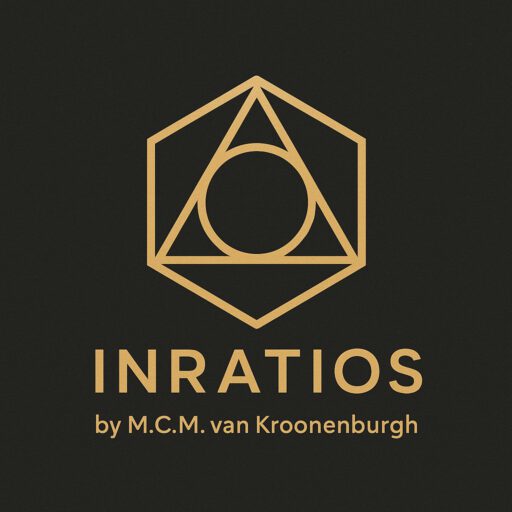Ratio Over Radius
The Logic Behind π-Free Measurement
Why radius no longer comes first
In classical geometry, a circle is inseparable from its radius.
You draw from the center outwards, define the curve, and calculate its properties through π.
It’s elegant. It works.
But in digital systems, elegance isn’t enough.
What matters is clarity, structure, and computability.
And in that world, starting from a radius can create more friction than form.
Why?
Because π only makes sense if you start with r.
Remove the radius, and π has nothing to work with.
But what if we turn that logic around?
If a circle fits perfectly inside a square,
then the square defines the boundaries, and the circle simply conforms.
From that square, we can determine the circle’s size, area, and shape identity
without ever needing π.
And here’s the surprising part:
once you have the square,
you already have the radius, it’s half the side.
And once you have the radius,
you can always reconstruct the square.
But in GRM, we flip the starting point.
We no longer begin with the radius or the curve.
We begin with proportional structure.
That’s not just a different formula.
It’s a different way of seeing.
When you don’t need π or r
In most systems, removing the radius from a circle seems like removing its essence.
After all, how do you define something round without measuring from the center?
But GRM doesn’t remove the radius.
It simply repositions it.
By starting from the bounding square,
we gain a reference that is visually fixed, digitally repeatable, and structurally neutral.
From that frame, the circle always takes up 0.7854 SAU in area and 0.7854 SPU in perimeter.
No π.
No r.
Just a shape inside a container, with a fixed ratio.
GRM doesn’t avoid π because it’s irrational.
It replaces it because it’s not necessary anymore.
Instead of relying on radial distance and arc equations,
we measure how much of the square the circle occupies.
That ratio stays constant ,in every context, as long as the circle is perfectly inscribed.
This means:
- You don’t need to know the radius to know the area
- You don’t need to calculate π to know the perimeter
- You only need the square, and the logic that lives inside it
And here’s what makes that powerful in digital environments:
Unlike π, which is infinite,
0.7854 is bounded.
It doesn’t fluctuate.
It doesn’t depend on approximations or decimal precision.
It’s not a calculation, it’s a definition.
This is measurement without the curve.
Without π.
Without guesswork.
It’s structure first.
Form second.
And clarity throughout.
The square that makes sense of everything
Once you stop building shapes from the inside out,
you realize something profound:
it’s not the circle that defines the system.
It’s the container that gives it meaning.
GRM treats the square not just as a boundary,
but as a reference frame.
A standard.
A map.
If the circle fits the square at a fixed ratio,
then every other shape that fits the square
can be measured, compared, and classified using that same logic.
When the square is your reference,
any inscribed shape becomes part of a shared language.
No more rewriting rules for every curve.
No more switching between formulas.
Just one system, one proportion-based grammar of space.
In GRM, the radius is no longer a step on the way to π.
It’s not a tool, it’s a consequence.
A visible trace of the structure that contains it.
The square doesn’t just allow the circle to exist.
It defines it.
And in doing so, it defines the radius too.
That’s the power of structure-first thinking:
where every part becomes meaningful through its relationship to the whole.
And this opens the door to something even more surprising.
What if you could do the same thing in 3D?
What if a sphere inside a cube could be measured,
not by displacement or πr³,
but by how much volume it actually occupies,
in direct proportion to the cube?
Tomorrow, we take that step.
From shapes on a plane
to volume in space.
Up next: Volume Without Displacement – A Cube-Based Logic for 3D Measurement
Stay curious.

